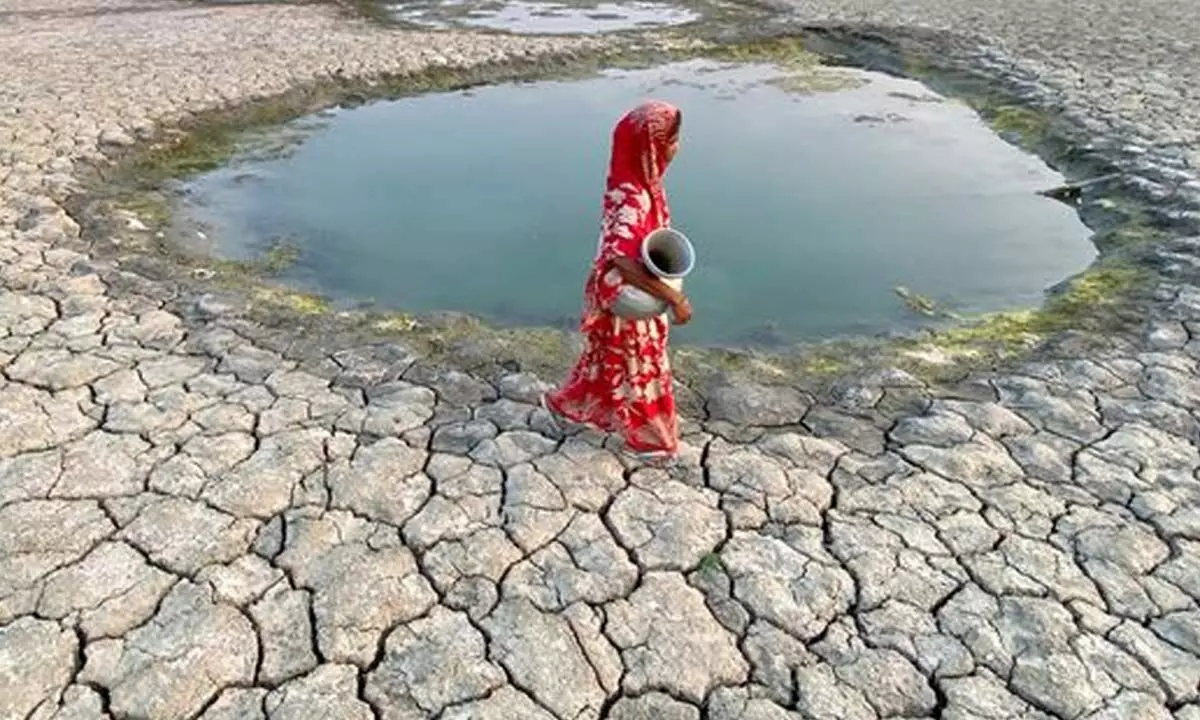Climate Change: High on rhetoric, low on implementation

Are all these global summits related to climate change proving to be a fiasco with commitments being confined to rhetoric and platitudes? Except for bits and pieces implementation of the action plans to restrict climate change, genuine endeavors to achieve the target of restricting climate change to 1.5 degrees is yet to materialise.
Are all these global summits related to climate change proving to be a fiasco with commitments being confined to rhetoric and platitudes? Except for bits and pieces implementation of the action plans to restrict climate change, genuine endeavors to achieve the target of restricting climate change to 1.5 degrees is yet to materialise. The meetings of the global forums have been reduced to monotonous and perfunctory routine with the participating leaders feigning concern about global warming and waxing eloquent on commitments to curb Greenhouse Gas emissions. The spate of catastrophes wreaking havoc in the form of landslides, glacial melts and climatic vagaries across the world and specifically India is the result of indifference, ignorance, ineptitude and lack of foresight in gauging cause and effect of natural calamities. In fact, terming such disasters as “natural calamities’ is a misnomer, since a majority of them are “manmade’’ and the consequence of unplanned disruption of nature and the ecosystem.
According to a climate change report, greenhouse gas emissions is supposed to peak before 2025, and decline 43% by 2030, for limiting global warming to 1.5°C. On the contrary, the persistent upward trend in greenhouse gas emissions till date, rules out any respite from global warming in the near future. The UN report has indicated national climate action plans remain insufficient to limit global temperature rise to 1.5 degrees Celsius. This does not mean that changes can be made to happen overnight or a within a short period of time. The question is: whether any concrete and effective initiatives are in place to achieve the targeted climate objectives. The shoddy and lackadaisical approach to implementation of the temperature control strategies, expose the fact that governments do not consider climate change as a priority to deserve contingent approach.
In India’s case, climate changes and climate vagaries can be attributed to a combination of compulsions, in addition to, policy and planning deficiencies. Heavy dependence on fossil fuels specifically coal - a major source of atmospheric carbonisation - for power generation, and untrammeled desertification and deforestation, resulting from promiscuous mining and urbanisation, have created a pervasive reservoir of greenhouse gases. From the Indian context substitution of coal for power generation has always been considered economically unviable, which explains the lack of interest and laggard initiatives to develop alternative energy sources. India’s Carbon dioxide emissions have recorded consistent increase - punctuated by ephemeral periods of declines - during the last five decades. After a brief respite in the CO2 emissions during year 2018-2019, from 2573 million metric tons - to 2541 million metric tons, the emissions resumed its upward trend, recording an all time high of 2730 million metric tons in the year 2023. According to official reports Coal accounted for around 70 percent of global emissions combustion in 2023 (+270 Mt).
In India, approximately 80 percent of the energy requirements both for power generation and industrial requirements are sourced from coal. Moreover, the ongoing plans to increase the coal-based generation capacity in the country during the next two years, means that alternative and renewable sources would be either out of focus or confined to the backburner. India’s Global Transition Index, at 63, reflects the government’s propensity to maintain status quo.
India’s total reliance on coal for power generation is a necessity and most of the futuristic projections point to continued dependence on this fossil fuel for catering to major chunk of country’s energy requirements. According to evaluations, coal consumption is proposed to be doubled to 1 billion tons in the not too distant future, from around 500 million tons.
India’s coal-powered emissions are further aggravated and intensified to abnormal levels because of two major contributory factors. Indian coal used by the power plants is of sub-standard quality which generates low productivity and high levels of polluting content. Second, technologies used by the power producers are obsolete which results in lower efficiency and high ash content. Power producers prefer indigenous coal because it is cheaper than imported coal.
The objective of according preference to indigenous resources coupled with the fact that power should be supplied to consumers at affordable prices are also viewed as reasons for the power producers opting for Indian coal.
The over dependence also portend a very disturbing scenario, since coal-powered plants in India are major sources of carbon dioxide emissions - which is a major causative of global warming. India has the fifth largest coal reserve in the world and the power sector accounts for a major chunk of total coal consumption in the country. Though there is likelihood of reduction in dependence on coal over the next few years, coal-fired power plants would continue to account for more than half of India’s electricity requirement. India’s is at an abysmal 63rd position in Global Energy Transition Index, which reflect the laggardly pace of transformation to renewable and green sources of energy , in the country. Some symbolic semblance of transition is happening, but the transformation process needs to be fueled and accelerated by energetic and cerebral efforts to prevent repercussions reaching a point of no return.
(The writer is senior print, electronic and digital
media journalist)














